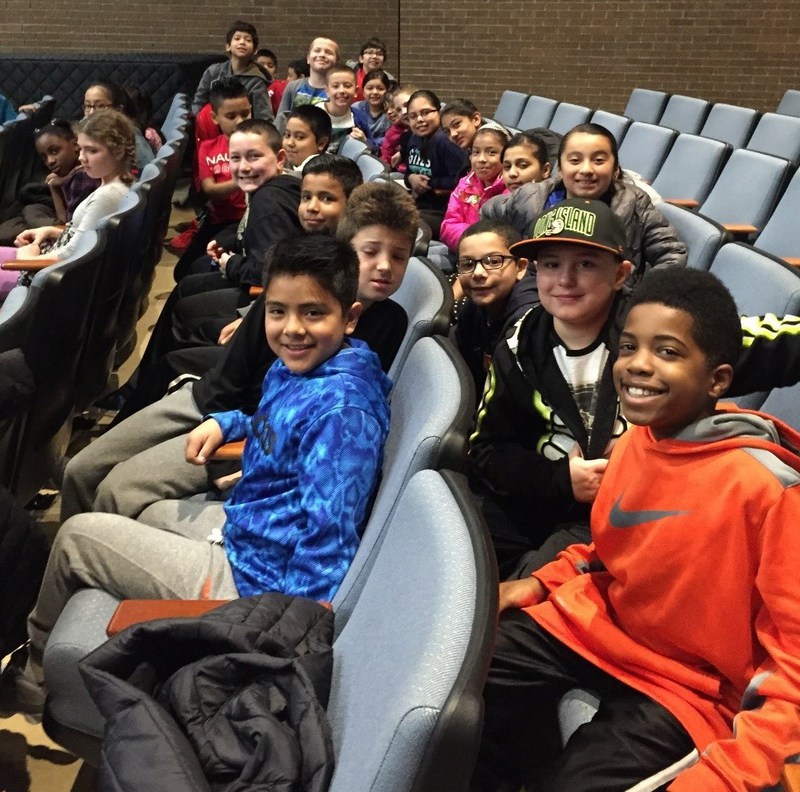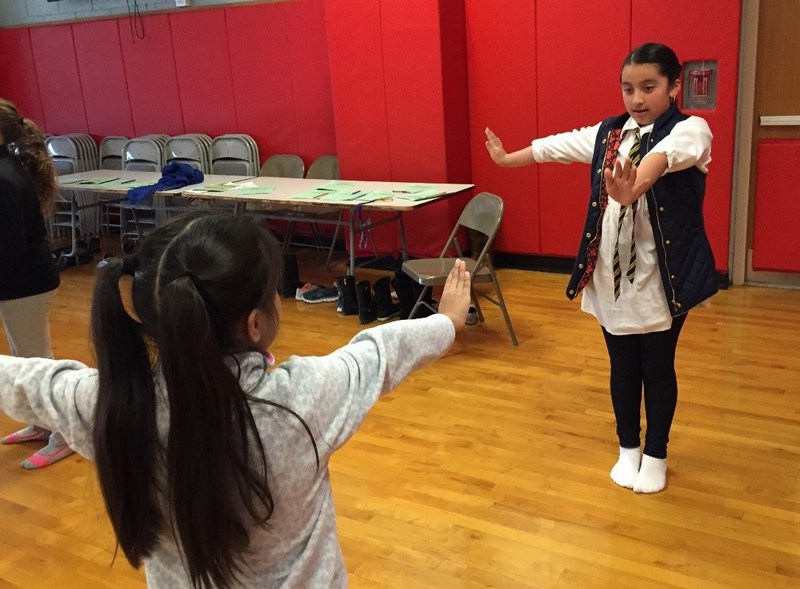
In bygone days, students were often given lists of words and told to memorize their meanings. Fast forward to 2016 and we found Patchogue-Medford Grade 4 students pushing away their desks to learn the meaning of power words through dance movements. The Grade 4 teachers and teaching artist Danielle Marie Fusco collaborated on the exciting ELA- and dance-infused residency.
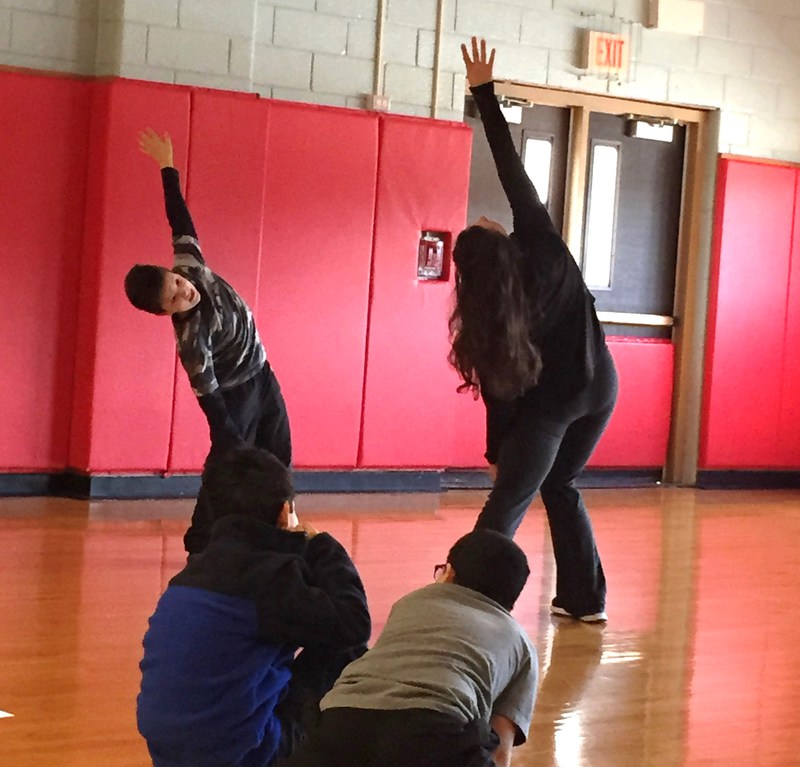
For each session of her residency, Ms. Fusco (standing right in the above photo) guided students in an exploration of two new power words as well as the vocabulary of dance movements. For example, in Lesson 1, the students considered the power words ‘compare’ and ‘contrast’ by learning and comparing ‘locomotive’ movements (movements that travel, such as walk, hop gallop) and ‘axial’ movements (movements that stay in place, such as push, bend, stretch).
The teaching artists gave each student a Dance Work Bank, a booklet that contained the language of stage direction, weekly assignments, and space for weekly reflections. “The purpose of these workbooks was to allow students explore movement and then describe their experience in writing,” Ms. Fusco noted.
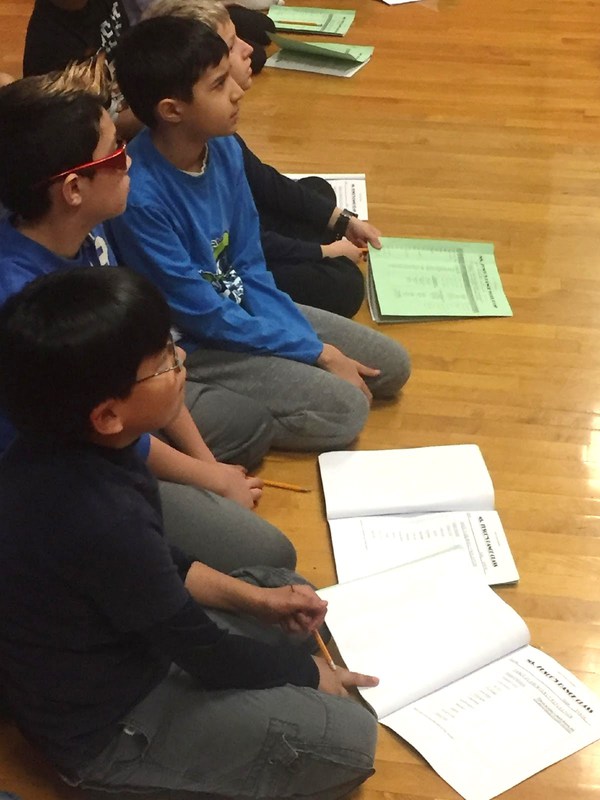
In Lesson 2, the children worked with the power words ‘formulate’ and ‘trace,’ while learning about mirroring in dance. “Working in pairs and small groups, the children formulated a short movement sequence and traced (mirrored) each other’s steps,” explained Ms. Fusco. “In the process, they got to explore their bodies’ capacities.”
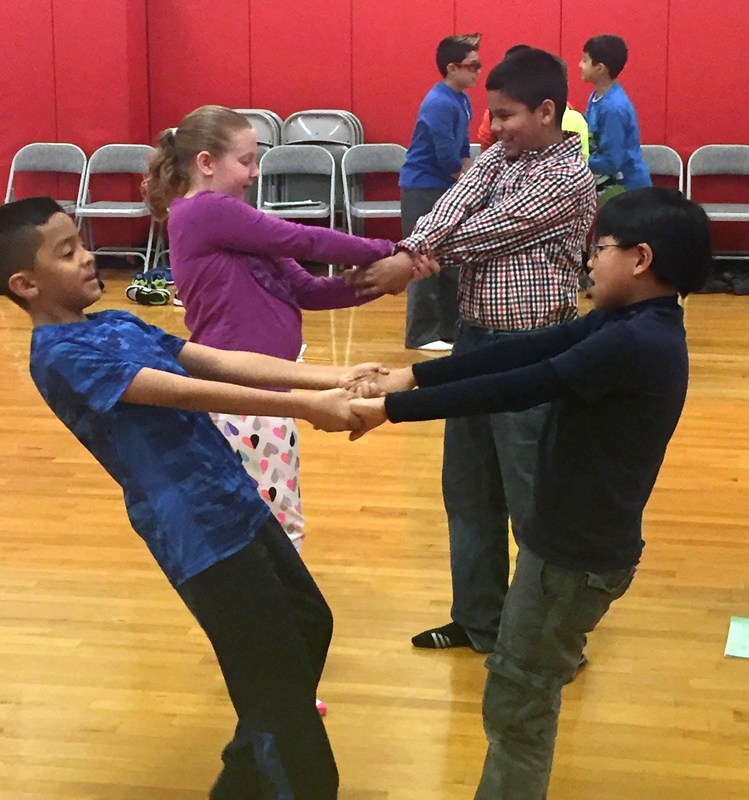
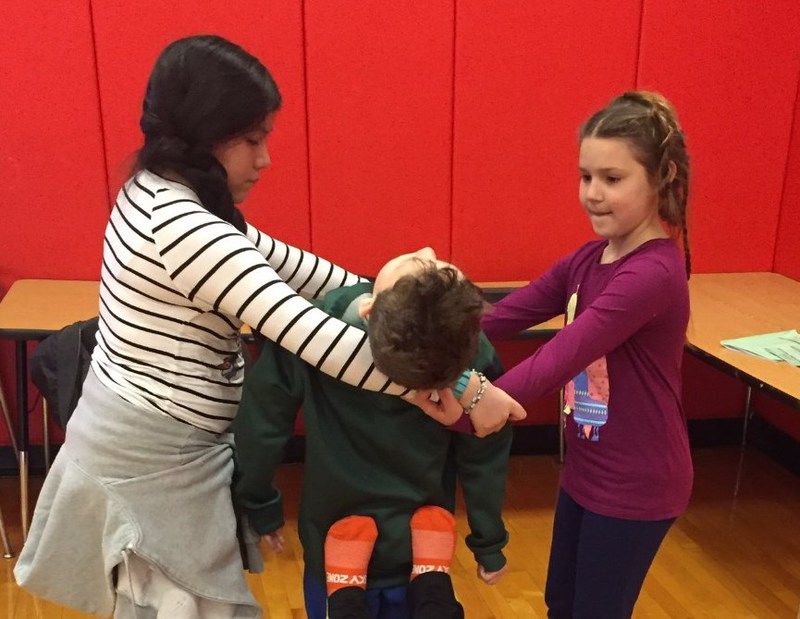
Ms. Fusco also incorporated video clips of professional dance sequences. During a lesson on the words “infer” and “predict,’ she shared videos from STOMP, Cotton Club with Greg and Maurice Hines, and Down Argentine Way with the Nicholas Brothers. After viewing the videos, the teaching artist inquired if children saw what they expected. Their reply was a resounding “No!” The students later created their own “unpredictable dances.”
The classes also saw a performance of Orpheus and Euripides by David Gonzalez. For the residency’s culminating activity, the students created their own dance inspired by David Gonzalez. They were asked to think about how they would like to tell their stories.
The students performed their dances for each other and then reflected on their experience. “I didn’t even know I was learning!” exclaimed one student. The classroom teachers noted that their students not only learned how to perform, but were taught how to be an audience—responding, analyzing and reflecting upon their classmates’ performances.
